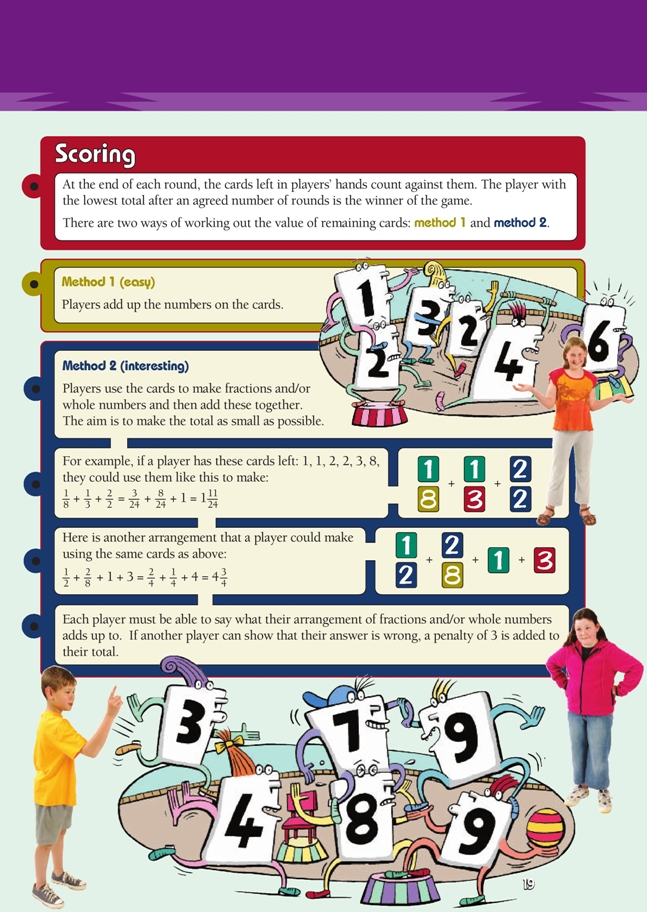This is a level 4 number activity from the Figure It Out series. It relates to Stage 7 of the Number Framework.
A PDF of the student activity is included.
Click on the image to enlarge it. Click again to close. Download PDF (1294 KB)
find equivalent fractions
add fractions
Number Framework Links
Use this activity to help students consolidate and apply their knowledge of equivalent fractions (stage 7).
A set of 80 equivalence game cards made from the copymaster
FIO, Level 3-4+, Proportional Reasoning, Book Two, The Equivalence Game, pages 18-19
One or more classmates
Once its structure and rules are understood, this adaptation of a well-known card game will be a popular choice as an independent practice and maintenance activity. By playing it, students will gain confidence with equivalent fractions and a sense for where they fit in fraction sequences.
Before the students begin playing, check that they have a strategy for understanding and finding equivalent fractions.
If they need the support of materials, they could use Fraction Pieces or Fraction Strips. If they are using number properties, the strategy is to multiply or divide by a suitable equivalent of 1. For example, 1/3 x 3/3 = 3/9 or 4/6 ÷ 2/2 = 2/3. (Students need to be comfortable with the fact that 1 has an infinite number of such equivalents.) Those who need to practise making equivalent fractions using number properties could use Equivalent Fractions (Material Master 8–9).
The concept of a “run” of fractions is critical to the game, and students should study the illustrations and be able to describe exactly what constitutes one. All fractions in a run must have the same denominator or an equivalent form with that denominator. The first numerator does not have to be 1, but the numerators must increase consecutively by 1.
In this game, the lowest score always wins. Two scoring methods are suggested. The second will create a further mathematical challenge and should appeal to able and competitive students. The penalty of an extra 3 points is important as an encouragement to students to check each other’s scores.
Answers to Activity
Game
A game using equivalent fractions

